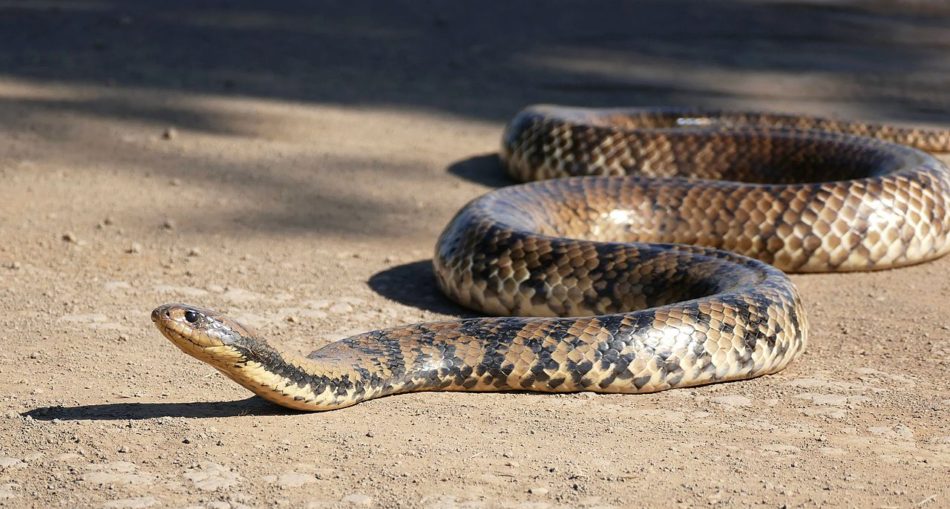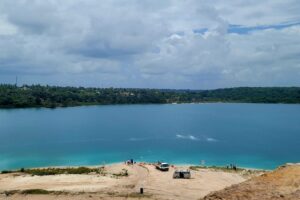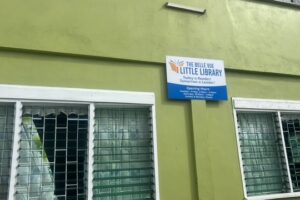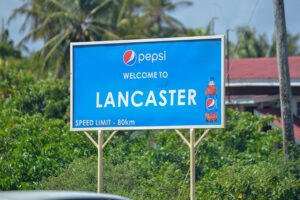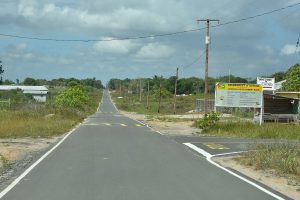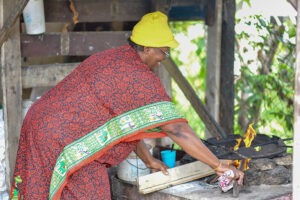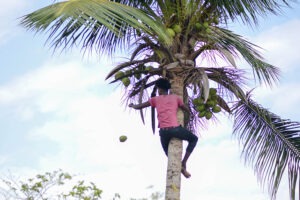The False Water Cobra is a medium-sized, rear-fanged snake belonging to the family of colubrid snakes. The False Water Cobra (Hydrodynastes gigas) is native to Argentina, Bolivia, Brazil, Colombia, Guyana, French Guiana, Paraguay, Suriname and Venezuela. While the scientific name of the species is Hydrodynastes gigas, it is more popularly known by its common names False Water Cobra and Brazilian Smooth Snake. It is called the Brazilian Smooth Snake because of its smooth scales and the False Water Cobra due to its preference of water habitats. The snake is mistaken for a cobra since it has a unique ability to flatten its neck to resemble the cobra. However, one of the main differences is that the False Water Cobra stays horizontal rather than rearing up vertically as cobras do. It can also flatten its entire body, which is an impossible feat for cobras.
Interesting Tip
- Gigas was derived from the Greek word “giga” meaning giant.
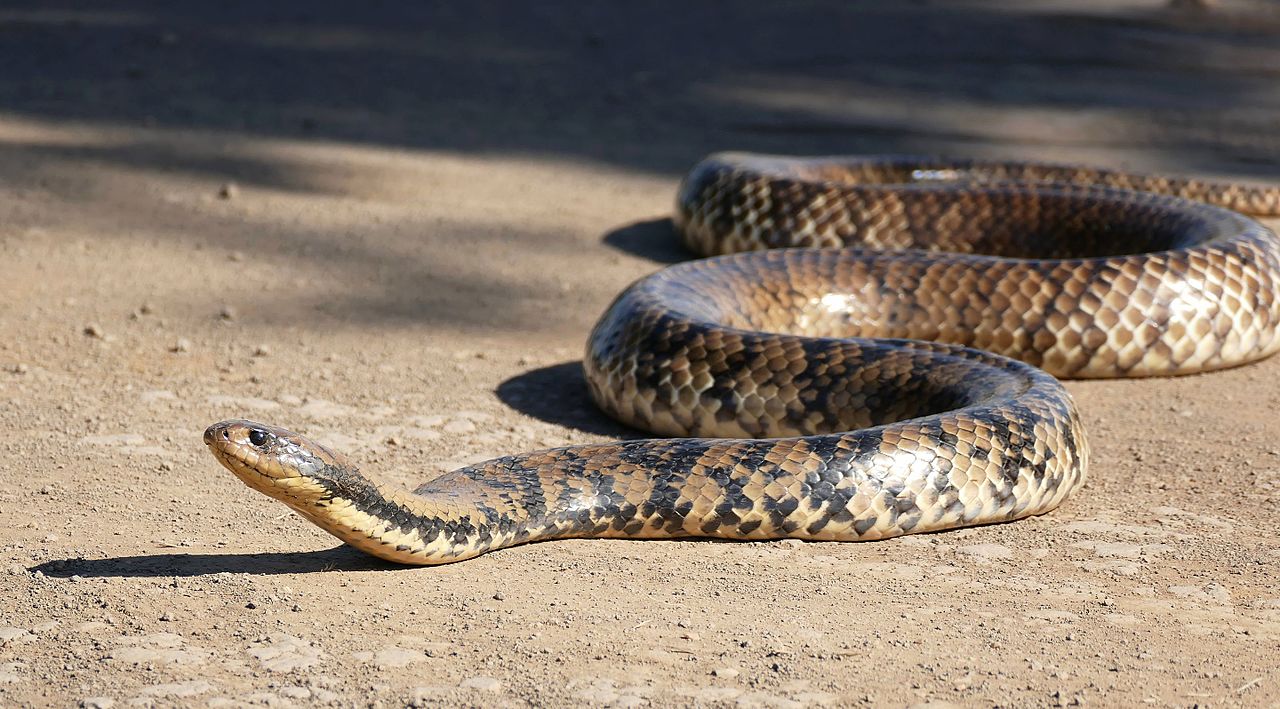
The False Water Cobra – Photo By Bernard DUPONT from FRANCE – Brazilian False Water Cobra (Hydrodynastes gigas) on the road …, CC BY-SA 2.0, https://commons.wikimedia.org/w/index.php?curid=50340168
Features Of The False Water Cobra
- Pattern – The brown or olive green body is flecked with bands and dark spots. Towards the end of its tail, the spots become darker, perfect camouflage in rainforest environments. The juveniles and hatchlings of the species are darker than adults without the dark eyes, looking more like a water snake or garter.
- Belly – The scales on its underside is also brown or yellow, dotted with dark flecks forming a line combining near its tail.
- Head – The head of the False Water Cobra can be made flat by the reptile as well as its entire body. The snake has large eyes, with circular pupils and a black tongue.
- Colour – The typical colour of the snake is brown or olive green.
- Length – A large colubrid, the adult False Water Cobra can reach up to lengths from nine to ten (9-10) ft.
Interesting Tip
- It was suggested by Mehrtens in 1987 that female False Water Cobras have brown undersides while the males are yellow; however, this is not proven.
- False Water Cobras bred in captivity have reduced pigments and varying colours.
Scientific Classification Of The False Water Cobra
The False Water Cobra – Hydrodynastes gigas [Scientific name]
- Kingdom: Animalia
- Phylum: Chordata
- Class: Reptilia
- Order: Squamata
- Suborder: Serpentes
- Family: Colubridae
- Genus: Hydrodynastes
- Species: H. gigas
Habitat Of The False Water Cobra
The False Water Cobra inhabits wet, humid and tropical areas including marshlands, tropical rainforests and the floodplains of rivers. While the semi-aquatic snake prefers wetlands, it can also be found in drier areas.
Diet Of The False Water Cobra
Since the False Water Cobra typically lives in wetlands they primarily feed on fish and amphibians like frogs and tadpoles. However, they will also consume mammals such as rodents, birds and smaller reptiles.
Reproduction Of The False Water Cobra
Like most snakes, the False Water Cobra is oviparous, meaning they lay eggs. Compared to their male counterparts who are sexually active throughout the entire year, the females are either seasonally or annually able to reproduce. The snake can produce as much two (2) clutches per year, with an average of fourteen to twenty-four (14-24) eggs. The eggs are incubated at around twenty-eight (28) degrees Celcius and hatch after around sixty (60) day. The hatchlings are about thirty-eight (38) cm in length but do not resemble the adult.
About The Venom
The False Water Cobra is venomous but toxicity has not been fully researched. However, it is known that the Duvernoy’s gland of the snake produces a secretion with high proteolytic activity. The snake can cause mechanical trauma in the form of envenomation and hypersensitivity.
5 Facts About The False Water Cobra
- While the False Water Cobra can grow up to ten (10) ft long most reach around six to seven (6-7) ft in length.
- Because of its large eyes with circular pupils, all Hydrodynastes gigas has good daytime vision.
- The snake is a hostile predator with an almost insatiable appetite. They grab their prey, wrap their body around it partially then swallow it live and writhing.
- The False Water Cobra is a medium-sized snake but ranks among the heaviest colubrid species at adult size.
- While the long, chewing bites by the reptile can also cause bruising and swelling however it is popularly kept as a pet.
False Water Cobra In Guyana
Native to Guyana, the False Water Cobra is a semi-aquatic snake with a love for humid wetlands. The snake has the uncanny ability to flatten its hood, making it resemble a cobra. Individuals in the species are also kept as pets. The next time you’re near wet, tropical areas, watch out for this venomous reptile!
Article References
- https://en.wikipedia.org/wiki/Hydrodynastes_gigas
- https://www.researchgate.net/publication/340610727_New_record_of_Hydrodynastes_gigas_Dumeril_Bibron_Dumeril_1854_Serpentes_Dipsadinae_in_northeastern_Brazil
- https://reptile-database.reptarium.cz/species?genus=Hydrodynastes&species=gigas&search_param=%28%28common_name%3D%27Hydrodynastes+melanogigas%27%29%29
- https://ec.europa.eu/environment/cites/pdf/reports/SRG%2061%20Review.pdf
- https://animaldiversity.org/accounts/Hydrodynastes_gigas/classification/
- https://nationalzoo.si.edu/animals/false-water-cobra

